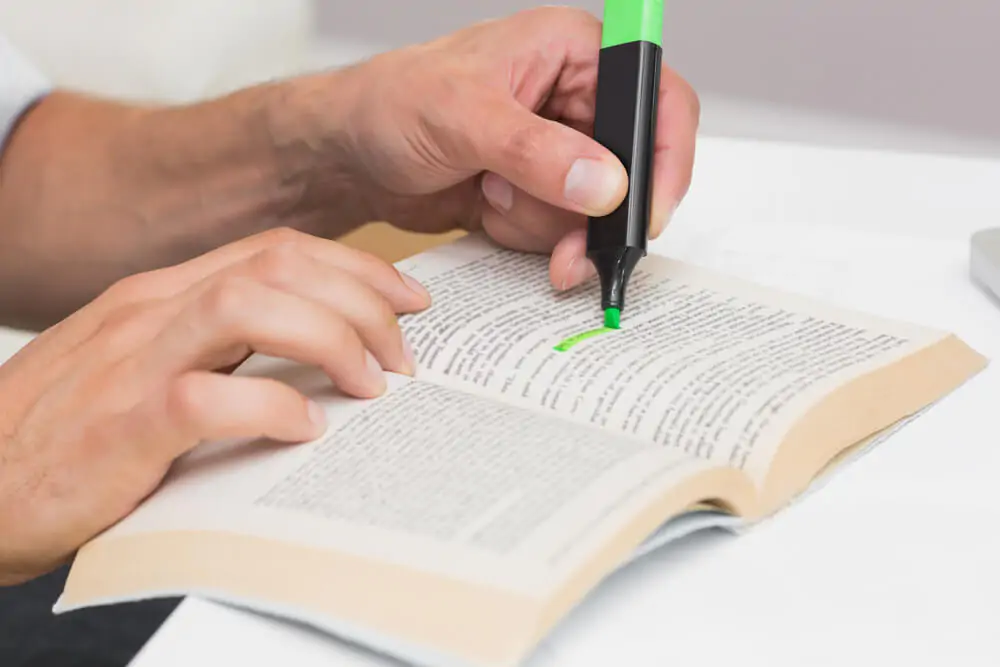Are you wondering how to analyze a paragraph? Learn more about paragraph structure, and identify the main argument in a few simple steps!
If you want to form a cohesive argument for an analytical essay, you must organize your paragraphs accordingly. Start your main argument with the thesis statement at the top, but every body paragraph must also have a topic sentence. Literary analysis is important for each analytical paragraph, and you need to prioritize cohesion. So, if you want to write an effective paragraph, take a look at this step-by-step guide below, and learn more about critical thinking.
| IMAGE | PRODUCT | |
|---|---|---|
|
Best Sentence Checker
 |
Grammarly
|
Claim My Discount → |
|
Best Alternative
 |
ProWritingAid
|
Claim My Discount → |
Contents
Materials Needed

If you want to learn how to analyze a paragraph, there are several materials you need to gather. These include:
- You need to have the paragraph in front of you. You should either pull it up on the computer or have a hard copy on a sheet of paper.
- You should have tools you can use to highlight certain parts of the paragraph. This could include a computer program with various colors or a stack of highlighters.
- You may want to have a notepad you can use to take notes as you go.
You don’t need much to analyze the paragraph. Once you have the tools above, it is time to get started.
Step 1: Identify the Topic Sentence
The first thing you need to do is to analyze the paragraph and identify the topic sentence. You probably learned about giving each paragraph a topic sentence in high school. The topic sentence needs to introduce the main idea. Ideally, the topic sentence should directly relate to the thesis statement, which is important for coherence.
If you only have a single paragraph, you might not find the thesis statement. On the other hand, if you are looking at an entire analytical essay, the thesis statement should be at the top of the introduction. It may be the first sentence in the introduction, or it may be the last sentence.
Then, try to link the topic sentence to the thesis statement. For example, if the writer has written an essay on the greatest generals of World War 2, each topic sentence might be about an individual general. Before going any further, take the time to identify the topic sentence. You may want to highlight this in a specific color.
Step 2: Highlight Each Supporting Fact

After this, you need to identify each supporting fact beneath the topic sentence. Ideally, the topic sentence should be followed by several statements that support that specific sentence. You should use a different color to highlight these supporting sentences beneath the initial sentence.
For example, if we follow the result from above, you might be analyzing a paragraph about why General Patton was one of the greatest generals in World War II. After reading the topic sentence, the author should have several sentences that explain why General Patton was one of the greatest generals in World War II.
There are different ways to lay out the evidence in an analytical paragraph. First, try to highlight the sentences that support the topic sentence. They might not be next to one another, but you should try to highlight individual points that list out the evidence.
If you are having difficulty breaking up the evidence in the paragraph, you may want to write them down in your notebook. This will make it easier for you to organize your thoughts.
Step 3: Identify the Transitions
The goal of an analytical paragraph is to structure a cohesive argument. Therefore, the individual statements should link together. After you identify the topic sentence and the pieces of supporting evidence, you should highlight transitions.
It might be a challenge to identify transitions in the paragraph, but several words will tell you that a transition is taking place. Some of the most commonly used transition words include:
- First
- Second
- Third
- Furthermore
- Next
- In addition
- Finally
- Lastly
If you see these words, you know what transition is taking place. These words are important because they keep the argument organized.
Step 4: Identify the Concluding Sentence
After you break up the individual pieces of evidence in the paragraph, you should identify the concluding sentence. Of course, the concluding sentence should come at the end of the paragraph; however, this is not necessarily the case. Some concluding sentences might not come at the end of the paragraph. Furthermore, some concluding sentences might be multiple sentences. You should note this in your notebook and try to highlight them accordingly.
Step 5: Identify the Sources Cited in the Paragraph
Next, you need to identify any sources that have been cited in the paragraph. Regardless of whether the author uses APA, MLA, AP, or Chicago Style, all sources should be cited unless they are common knowledge. Importantly, not every analytical paragraph is going to have sources. Sometimes, the author tries to argue based on their own opinions. Therefore, there might not necessarily be any sources cited.
To figure out how strong the paragraph is, you will need to explore the sources. There are several factors you need to consider. These include:
- What is the quality of the source? For example, is it coming from a random log? Or, is it coming from a high-quality research paper?
- Take note of when that specific source was published. In general, sources that are published more recently or more credible. While this is not always the case, it is a common trend.
- If you are using an academic research database, you should see how many other papers have cited the same source. In general, the more people cite that source, the more credible it is.
- Has the author used the source correctly? More specifically, has the author portrayed the argument of the source properly?
If you answer these questions, you can figure out more about the strength of that specific source.
Final Word on How To Analyze a Paragraph
In the end, there is more than one way to analyze a paragraph; however, this is a fundamental process you can follow. Remember that analyzing a paragraph aims to see how well it supports the original argument to the thesis statement. Ideally, the paragraph should have a clear topic sentence, plenty of supporting evidence, and a concluding sentence directly related to the original topic sentence and the thesis statement.
If the paragraph is particularly strong, it should have a list of credible sources that back up the evidence that has been used. Finally, you might want to evaluate the paragraph in the context of the entire essay. That way, you can figure out how all the sections have been structured and how well the paragraph supports the original argument of the paper. You might also be interested in our guide on how to analyze a sentence.
FAQs About How To Analyze a Paragraph
What is the point of analyzing an individual paragraph?
The point of analyzing an individual paragraph is to see how well it has been structured. If the paragraph has been structured well, it should support the essay’s thesis statement.
Can I analyze paragraphs in my own essay?
Yes, you can certainly analyze paragraphs in your own essay. Furthermore, this is a good idea. You want to make sure your paragraphs are structured accordingly. If you break down the paragraphs in your essay, you can improve the quality of your work.
What is the basic structure of an analysis paragraph?
There are three main components to an analysis paragraph. The first is a topic sentence. The second is the body of evidence. The third component is the concluding sentence. Finally, you might want to state your sources in the paragraph itself, which could be considered another important structural component.